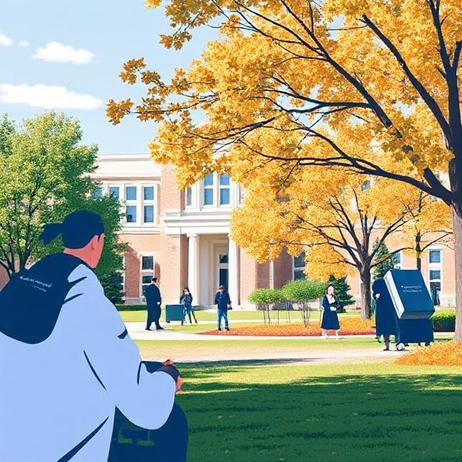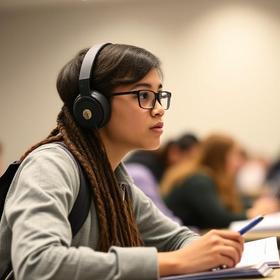Seamless Transitions: Mastering the Community College to University Transfer Process (2025 Update)
For many students, the transition from community college to a four-year university is a critical turning point. In 2025, that pathway remains both full of opportunity and fraught with hurdles. This updated guide retains the original structure but integrates the latest data, policy shifts, and real-world insight to help students, parents, and educators navigate the community college → university transfer process more effectively.
1. Why Transfer Matters More Than Ever
In recent years, transfer activity has rebounded — and visibility into the process has improved. In fall 2024, nearly 1.2 million students transferred or entered a new institution, constituting about 13 percent of non-freshman undergraduates. Transfer enrollment grew by about 4.4 percent year over year. Clearinghouse Research Center+2The EDU Ledger+2
Institutions and policymakers are noticing. Many states are adopting structured transfer pathways and stronger articulation agreements to reduce barriers. Still, the obstacles students face—credit loss, misalignment of curricula, and administrative opacity—persist.
2. The Reality: Transfer Rates, Credit Loss, and Completion Gaps Low Transfer Completion Rates
Only about one-third of community college students ever transfer to a four-year institution. Of those who do transfer, fewer than half complete a bachelor’s degree within six years of starting at the two-year school.
These numbers are worse for historically underrepresented groups: low-income, Black, Hispanic, and older students all face even lower rates of transfer and completion.
Credit Loss Is a Major Drag
One of the most persistent frustrations is credit loss. On average, students who transfer lose about 13 credits (a semester’s worth), and roughly 40 percent receive no credit for prior coursework at all. Community College Daily
Historically, estimates suggest students lose between 34 percent to 40 percent of their credits during institutional transitions. The Journalist's Resource Some more recent estimates indicate that about 43 percent of community college credits fail to transfer intact.
This loss lengthens time to degree and inflates cost. Credit loss also disproportionately burdens lower-income students who depend on minimizing tuition and time.
Institution Selectivity and Transfer Acceptance
Transfer acceptance rates vary widely. Some large public universities accept upwards of 70–90 percent of applicants, while highly selective private or Ivy League institutions may accept fewer than 1–10 percent of transfer applicants.
Even when accepted, transfer students may find that not all accepted credits apply toward their chosen major, creating excess credits (i.e., credits that count only as electives, not toward core requirements).
In short: simply being admitted is not sufficient; strategic credit alignment is essential.
3. What’s Changed in 2025: Policy, Enrollment, and Institutional Strategy Enrollment and Transfer Trends
Community college enrollment is rebounding. In 2024, community colleges saw over 4 percent growth in total enrollment, with freshman numbers rising more than 6 percent. EAB Dual enrollment (high school students taking college courses) continues to expand as well. EAB
Among transfer students, nearly 39 percent earned a credential (certificate or associate degree) prior to transfer in 2024—a slight drop from 41.6 percent in 2020.
Interestingly, although fewer than 10 percent of community college students transfer into highly selective institutions, these transfers compose more than half (57.4 percent) of the student body at those institutions. Tuition and Cost Pressures
Tuition has continued upward momentum. For 2024–25, average in-state public four-year tuition and fees ranged from about $6,360 to $17,490, depending on state. College Board Research The average out-of-state tuition and fees for four-year institutions reach approximately $28,445, while private nonprofit universities average $38,421.
Community colleges remain more affordable: the average tuition and fees at two-year institutions hover around $3,885 nationwide.
Even after accounting for inflation, published prices for private nonprofit universities have grown by nearly 200 percent over the past 50 years. In 2024–25, robust federal and state investment has kept net prices somewhat more stable, but disparities persist.
Policy and Program Innovations
Guaranteed Transfer Agreements & Block Transfer
Institutions are increasingly adopting “block transfer” or guaranteed transfer agreements: students who complete a defined set of courses (often with a minimum GPA) are assured acceptance at partner universities with full credit application. For example, Lincoln Land Community College established such an arrangement with Millikin University in 2025. Jacksonville Journal-CourierStatewide Transfer Frameworks
Some states now enforce common general education curricula across two- and four-year institutions. This standardization ensures that general education credits won’t be rejected by receiving universities.Predictive Analytics & Advising Models
New research explores applying transfer learning algorithms to retention prediction models, enabling more equitable advising support across diverse community colleges. arXivTransparency Mandates
The U.S. Department of Education’s College Affordability and Transparency Center continues to pressure institutions to publish net cost data, highlighting colleges with rapidly rising prices.Calls for National Data Reform
Advocacy groups support enhanced data systems (via legislation like the proposed College Transparency Act) to better track student outcomes across institutional boundaries, improving visibility into credit transfer success and long-term attainment.
4. Expert Tips to Build a Smooth Transfer Strategy
Below are best practices current in 2025 to help students maximize success in transferring:
Begin with the End in Mind
Pick your target universities early. Understand their course requirements and which courses accept transfer credit.
Seek articulation agreements upfront. Advisors should help identify which courses will map to your intended major at the target institution.
Use degree audit tools. Many institutions offer online tools showing exactly how your community college credits will apply toward a bachelor’s degree.
Stay Strategic About Credit Load
Balance general education and major prerequisites. If your institution allows, take courses that double-count for both.
Avoid “elective padding.” Choose courses that are more likely to transfer or fulfill degree requirements.
Monitor credit caps. Some universities limit the number of transfer credits accepted (e.g., maximum of 60 or 90).
Stay in Communication with Both Colleges
Meet regularly with dual advisors. Keep both your community college and target university in the loop.
Request pre-approval of specific courses. Some universities offer course equivalency evaluations before enrollment.
Document syllabi and course descriptions. These help universities assess credit legitimacy later if questions arise.
Use All Available Supports
Transfer advising centers. Many community colleges now host dedicated transfer offices.
Peer mentors. Students who have successfully transferred can share insights on unseen hurdles.
Financial aid counseling. Moving from a two-year to a four-year often changes your aid package structure.
Stay Agile and Persistent
Be ready for credit challenges. If a course is denied, appeal with supporting documentation.
Consider alternative paths. Sometimes lateral transfers to slightly less selective institutions yield better credit carryover.
Track progress continuously. Don’t assume credit mapping will be perfect—verify at each semester.
5. Real-World Example: A Seamless Transition in Practice
At Lincoln Land Community College, students completing approved associate programs (e.g. arts, sciences) with at least a 2.0 GPA are guaranteed transfer to Millikin University. That transfer includes full acceptance of core general education credits—ensuring students can complete their bachelor’s in two additional years. Such agreements are becoming more common: in 2025, institutions in multiple states have launched or expanded guaranteed transfer partnerships, especially in regional higher education consortia.
6. Measuring Success & Tracking Outcomes
When assessing transfer pathways, consider the following metrics:
Transfer-out rate: the proportion of community college students who exit with a transfer to a four-year.
Bachelor’s completion rate: the share of those who transfer and complete a bachelor’s degree within six years.
Excess and unused credits: average number of credits beyond the required 120 that students accumulate.
Time to degree: total semesters elapsed from initial community college enrollment to bachelor’s completion.
Return on investment: comparing debt load, time, and post-graduation earnings.
And importantly, institutions should disaggregate these metrics by race, income, and age to identify equity gaps.
7. Final Takeaways for 2025
Strategic planning matters more than ever. Students who proactively manage credit alignment with target universities dramatically improve their odds.
Articulation agreements are now essential tools, not optional conveniences.
Advising and transparency are evolving. Advances in predictive models and mandated reporting are pushing colleges to be more student-centered.
Persistence and advocacy pay off. Students who flag issues early, document course equivalencies, and consult multiple advisors often recover credits others lose.
The transfer route—community college → university—is fraught with obstacles, but with intention, support, and up-to-date strategies, it remains a powerful pathway to a bachelor’s degree. For more insights on navigating higher education options, you might also explore resources on PrivateSchoolReview.com to understand how private institutions align with public partnerships.
By treating the transfer process not as an afterthought, but as a carefully mapped journey, students can maximize efficiency, reduce wasted time and cost, and reach their degree goals with confidence in 2025 and beyond.















